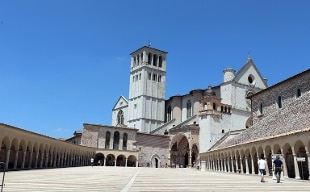- Ko tourism in Italy, 80% less in hotels in June
- Enit alarm on tourism: in August rooms reserved for only 40%
Share
18 July 2020Well tourism by the sea and in the mountains and tourism in the villages. However, the cities of art are suffering the most in this summer of pandemic and post lockdown.Assoturismo Confesercenti launches the alarm, commenting on the data of an investigation by the Centro Studi Turistici. Travelers, in cities like Rome, Florence, Venice, are literally halved: only 51% of the rooms available are booked. At least in this weekend, which is however in chiaroscuro: seaside and mountain resorts return to see the flow of visitors.
Rome and Florence are particularly in crisis, where just over a third of availability (36%) is booked. Naples (38%) and Venice (42%) also hurt; Palermo (45%), Milan (46%) and Bologna (49%) are a little better, while Perugia (54%) and Matera (55%) record results above the average of the other cities of art - even if in any case unsatisfactory ).
There is no foreign tourism, which on average - during the summer season - is worth about 68% of the presences. According to Assoturismo-CST estimates, in the summer quarter 2020 (June-July-August) in the Rome, Venice, Florence, Milan and Naples alone there will be about 8.5 million fewer visitors than in the same period of 2019.
The health emergency then generally changed the choices of Italians in terms of travel. And even if it has not completely curbed the desire for a holiday, the tendency to short trips of two or three nights is confirmed, choosing mainly marine or mountain locations, possibly of short range.
According to Coldiretti, two out of three Italians (66%) then take a break in the villages, in search of the 'social distancing' perhaps, in search of surely less known products and traditions. The association comments on the Notosondaggi survey, which highlights a new role played by the smaller towns driven by the effects of the pandemic that led to the rediscovery of proximity tourism.
A phenomenon also favored by the widespread diffusion of small municipalities which increases the ability to offer an unparalleled natural, landscape, cultural and artistic heritage. In Italy there are 5,498 centers with less than 5,000 inhabitants, almost 70% of the total, but only 16% of Italians reside there, equal to 9.8 million inhabitants, although they represent 54% of the entire national surface.

